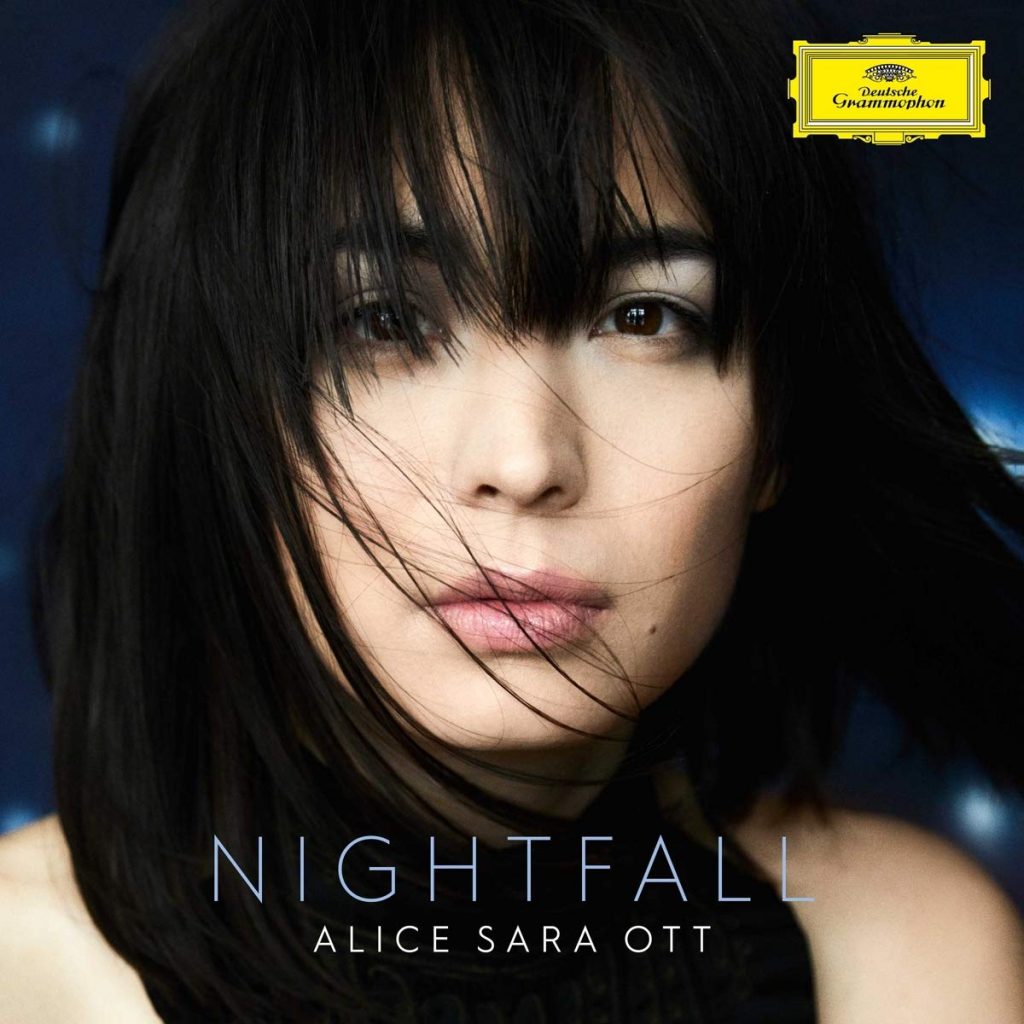Nightfall
April 2021
“Nightfall” was released on August 24, 2018 by Yellow Label affiliated with Deutsche Grammophon. Having been Deutsche Grammophon artist for 10 years, Alice Sara Ott has successfully completed another recording, this time including Claude Debussy, Erik Satie and Maurice Ravel in her horizons.
The album comprises a choice of works both luminous and dark, very well combined throughout the entire program. This “Nightfall” album has a nostalgic air in the vision of the pianist Alice Sara Ott, who aims to delve into the mysteries and interior images starting from “the dichotomy of human feelings and experiences, all against the background of a nocturnal atmosphere”.
Debussy’s youthful work ‘Reverie’ is the first piece of the album. It’s a charming piece full of marvelous simplicity, repeated motifs and lack of climaxes, which makes it very appropriate to begin the album.
It is followed by the four movement ‘Suite bergamasque’ also by Debussy. The remarked strident character of the outer movements ‘Prelude’ and ‘Passepied’ but also ‘Menuet’ makes a beautiful contrast in opposition to the melancholic spirit of ‘Clair de Lune’. This last movement with its fascinating tune and performed with implicit transparencies and a subtle detachment, gets into our souls in a momentum full of joy and bliss.
Alice Sara Ott musical discourse is very well elaborated, honest, clear and with a direct approach and technical ease. We can easily detect a nuance of melancholy, largely increased in the music of Erik Satie. The pianist chose two Gnossiennes, between which is interspersed a Gymnopedie. This works of captivating simplicity from the genuine bohemian Erik Satie, are deeply enchanting for its harmonious originality.
In Scarbo, the last piece of the cycle “Gaspard de la nuit” by Maurice Ravel, one of the most difficult episodes, Alice Sara Ott unfolds all her marvelous dexterity. The pianist sharply attacks the piece with an admirable command and great sensitivity, maintaining the tension of the moment that finally dissolves in “Pavana for a deceased infant” also by Ravel. The choice of this piece to end this very nuanced and intricate album was very fortunate. Ravel himself described the piece as ‘an evocation of that little prince who might, in former times, have danced at the Spanish court’. Here it’s the listener’s decision to choose by themselves whether this expresses a desire for eternal youth, or the dilemma of someone who cannot grow up.
Ott’s precision and dynamics are her strong points. Sometimes, she sacrifices expression for accuracy. We are glad that this didn’t happen in this case, full of genuine emotion and sensitivity, especially in Ravel’s works.
We totally reccomend you joining Alice Sara Ott in her journey through bright and darkness.
– Clara Horner

